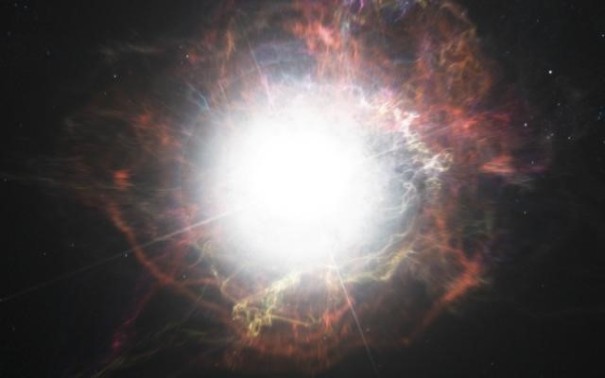Science enthusiast Joe Issa, who has commented on cosmic events before, has been left amazed by recent reports of a star which appears to have cheated death not once, but twice.
“You only see these things in a James Bond movie. I have read about stars dying and stars being born, but I have never heard of a star rising from its grave; not even once, let alone twice.

“According to the literature, a typical supernova explodes once and then fades to dust soon after and you will never see a second explosion, which would mean the star did not die in the first place.
“This latest discovery will serve to enhance our knowledge, even if only to find out that what we thought we knew about a dying star or supernova is not so after all. So there’s a need to continue this piece of research to see it through to dust,” said Issa, who is head of Cool Corporation.
Issa was commenting on a recent Associated Press article titled, “Stellar encore: Dying star keeps coming back big time”, in which astronomers reported that a massive star 500 million light-years away exploded in 1954 and apparently again in 2014.
The research is said to have confounded scientists who thought they knew how dying stars ticked.
“The oft-erupting star is 500 million light-years away — one light-year is equal to 5.9 trillion miles (9.5 trillion kilometres) — in the direction of the Big Bear constellation. It was discovered in 2014 and, at the time, resembled your basic supernova that was getting fainter.
“But a few months later, astronomers at the California-based Las Cumbres Observatory saw it getting brighter they have seen it grow faint, then bright, then faint five times again. They have even found past evidence of an explosion 60 years earlier at the same spot,” the report said.
Supernovas are said to typically fade over 100 days, but this latest one is still going strong after 1,000 days, although it is gradually disappearing.
The finding which was published in the well-respected journal Nature has been described as “very surprising and very exciting” by astrophysicist Iair Arcavi of the University of California in Santa Barbara who led the study.
“We thought we had seen everything there is to see in supernovae after seeing so many of them, but you always get surprised by the universe. This one just really blew away everything we thought we understood about them.”

The supernova is said to be officially known as iPTF14hls. It is believed to have once been a star up to 100 times more massive than our sun. It could well be the most significant stellar explosion ever observed, which might explain its death-defying peculiarity, the article said.
“It could be multiple explosions occurring so frequently that they run into one another or perhaps a single blast that repeatedly gets brighter and fainter, though scientists do not know precisely how this happens.
“One possibility is that this star was so massive, and its core so hot, that an explosion blew away the outer layers and left the centre intact enough to repeat the entire process. However, this pulsating star theory still doesn’t explain everything about this supernova,” Arcavi reportedly said.
Harvard University’s astronomy chairman, Avi Loeb, who was not involved in the study, has speculated that “a black hole or magnetar – a neutron star with a strong magnetic field – might be at the centre of this never-before-seen behaviour,” noting that further monitoring may better explain what’s going on.
As Las Cumbres – a global network of robotic telescopes – continues to keep watch, scientists are said to have no clue whether this particular supernova is unique. They say it appears rare since no others have been detected.
“We could have missed plenty of them because of it kind of masquerades as a normal supernova if you only look at it once,” Arcavi was quoted as saying, adding that “eventually, this star will go out at some point. I mean, energy has to run out eventually.”

